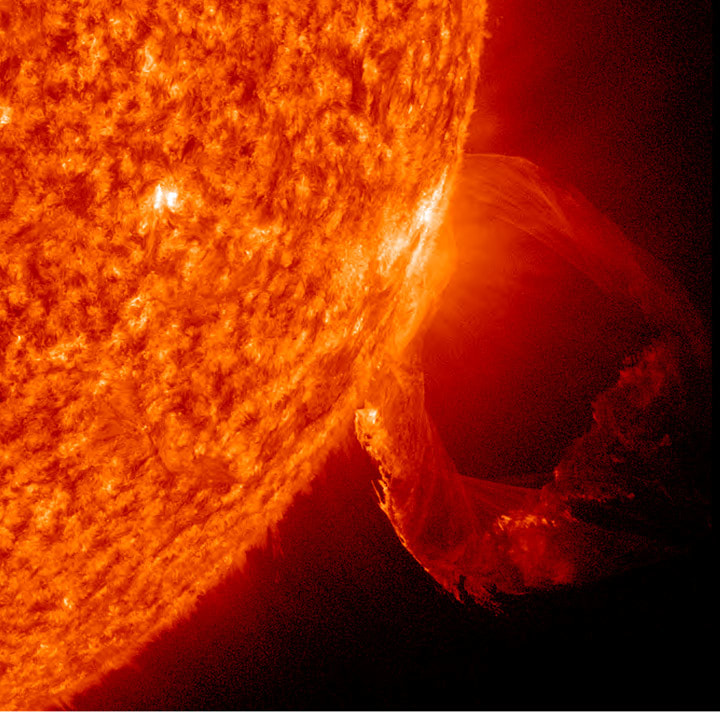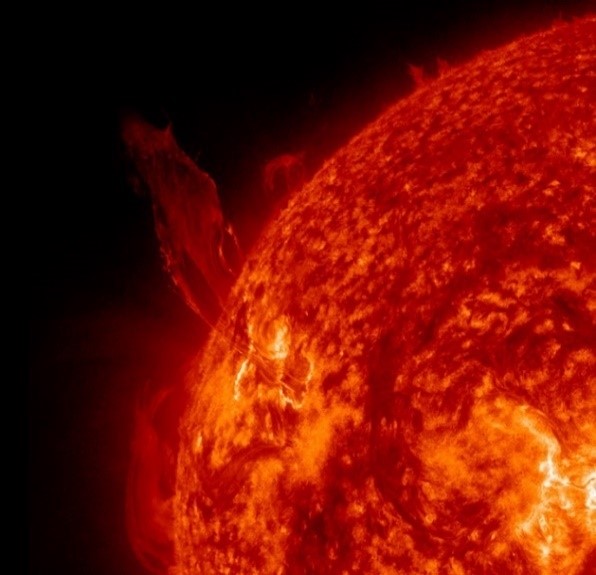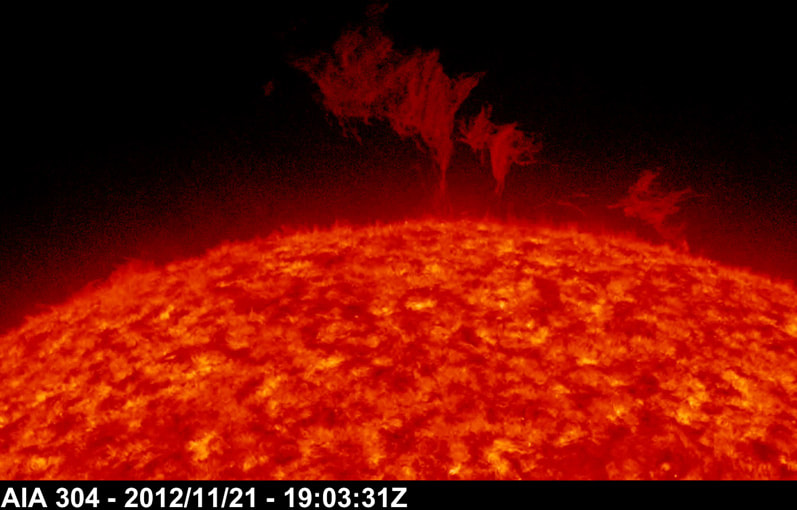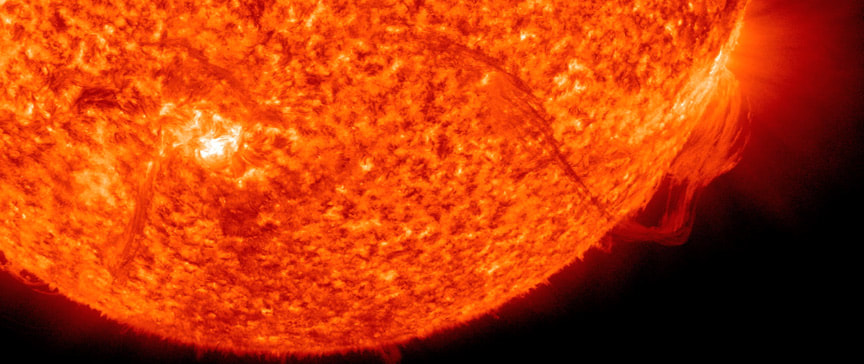Our blog this month looks at one of the more visually spectacular features of the Sun. Prominences are eruptive features seen within the chromosphere and corona, the lower and outer atmosphere of the Sun, and are typically plume shaped. Their appearance readily reveals that they are associated with magnetic activity and the form and structure of the classical loop prominence can be seen to follow magnetic field lines of force.
Courtesy of NASA (Solar Dynamics Observatory)
In 1877 the Italian astronomer Angelo Secchi (b.1818 d.1878) provided the base classification of quiescent and eruptive. This was extended and an extensive classification of six major classes was proposed by the American Edison Pettit (b.1889 d.1962) in 1943. Alternative systems have been proposed more recently. The most commonly seen type of prominence are:
1) Loop – The archetypal prominence, where an arch is formed, generally between two active regions. Material flows along the flux lines of magnetic field and the plasma returns the photosphere along each leg of the loop. Loop prominences are closely associated with solar flares and are sometimes referred to as post-flare loops
2) Spray – This is where a loop becomes disconnected/open-ended and material is ‘sprayed’ into the corona. These prominences are associated with magnetic reconnection events and are the most energetically active of prominences.
Courtesy of NASA (Solar Dynamics Observatory)
4) Fast Ejection – These are similar to surge prominences, but here a ‘blob’ of plasma is ejected into the corona. No loop is seen to form in this class.
5) Coronal Rain – This is the collapse of loop prominences along and between both legs of the arch.
6) Coronal Cloud – These are irregular masses of plasma suspended within the corona. The plasma returns to the photosphere only very slowly (i.e. a few weeks).
Courtesy of NASA (Solar Dynamics Observatory)
Filaments are prominences which are seen against the disc of the Sun. They appear dark due to absorption within the higher temperature corona. They are most often seen (and persistent) in specific latitudes (near the poles and at mid-latitude in both hemispheres) and in neutral magnetic regions between two opposite polarity areas.
Courtesy of NASA (Solar Dynamics Observatory)
Although highly energetic, these are relatively weak features when we compare their energies to solar flares and Coronal mass ejections. Whilst prominences generally have little effect on the ‘space-weather’ near the Earth, flares and CMEs can be significant hazards both for space probes and manned flights; but also the Earth. We will begin to look at these latter threats in next month’s blog.





